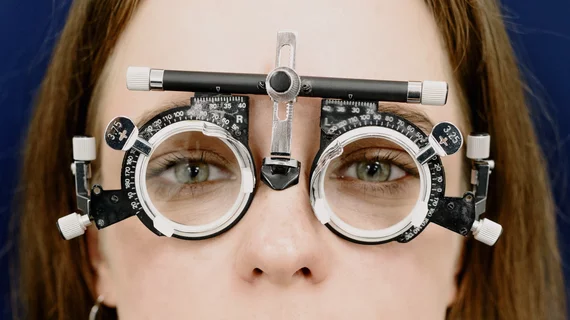Long daily exposure to blue light no threat to radiologists’ eyesight
Most radiologists log many hours every workday gazing into computer monitors emitting blue light, but their eyes are at close to zero risk of damage from retinal phototoxicity.
Mari Wentzel, MBChB, and colleagues at University of the Free State in Bloemfontein, South Africa, confirmed the verdict and had their study published in the South African Journal of Radiology [1].
Describing the aim of the project, they cite prior research showing that the dangers of blue light and its effect on ocular and general health are well established.
“The scope of practice requires healthcare practitioners in diagnostic radiology to spend long hours in front of dedicated diagnostic display units that use light-emitting diode (LED) technology, which emit high amounts of blue light,” Wentzel and co-authors write. “The authors’ concern was that this may predispose radiology practitioners to an occupational hazard related to blue light and its sequelae.”
For the study, the team worked with a handful of radiologists who collectively spent an average 380 minutes per day with eyes on digital images over a six-month period.
Measuring blue-light radiance with a spectroscope and image analysis software, Wentzel and colleagues found participants were exposed to blue light at a rate more than 10,000 times below threshold values and recommendations set out by the American Conference of Governmental Industrial Hygienists (ACGIH) and the International Commission on Non-Ionizing Radiation Protection (ICNIRP).
While monitors displaying brighter images such as chest X-rays radiated more blue light than those showing darker images, e.g., MRI brain studies, “exposure to effective blue-light radiance from monitors during a standard working day was far below the ranges that are recognized as hazardous,” the authors remark in their discussion.
Their conclusion:
Despite spending long hours in front of diagnostic monitors, radiologists’ exposure to effective blue-light radiance from monitors was far below hazardous values. This suggests that blue-light exposure from diagnostic monitors does not increase the occupational health burden of radiologists.”
Wentzel and co-authors’ findings align with those from a 2019 study conducted by radiology researchers at Emory University and published in the Journal of Medical Imaging [2].
In that project, Alexander Dabrowiecki, MD, and co-authors concluded that wearing eyeglasses with blue-light filtering lenses “may be of benefit to some [radiologists] and are certainly unlikely to be of any harm.”
More from the 2019 research:
As society’s exposure to digital screens increases each year, it is of great importance that methods to reduce computer vision syndrome incidence and severity are explored and employed in order to ensure better health and performance in the modern digital age.”
The Wentzel et al. study is available in full for free here, the Dabrowiecki et al. study here.

